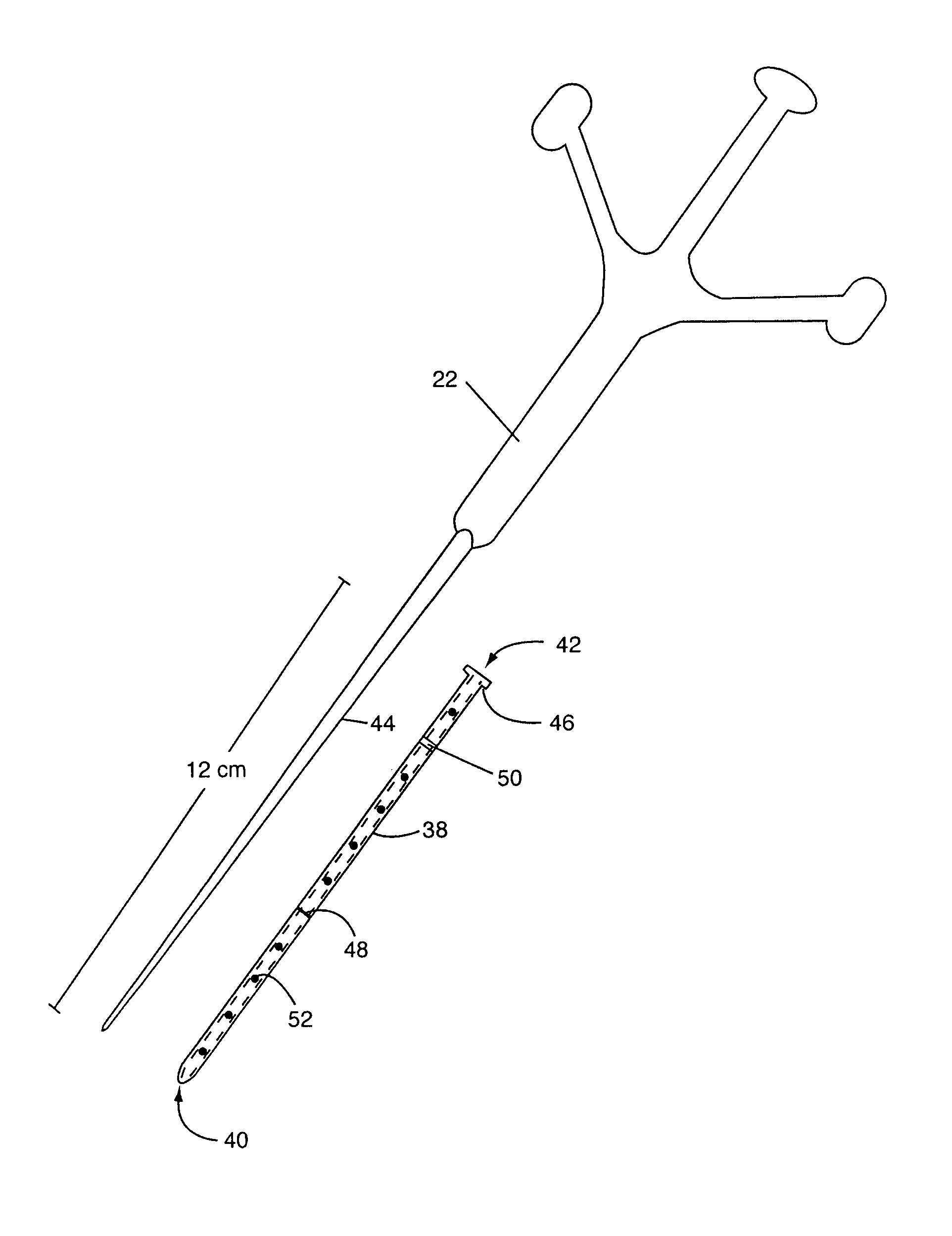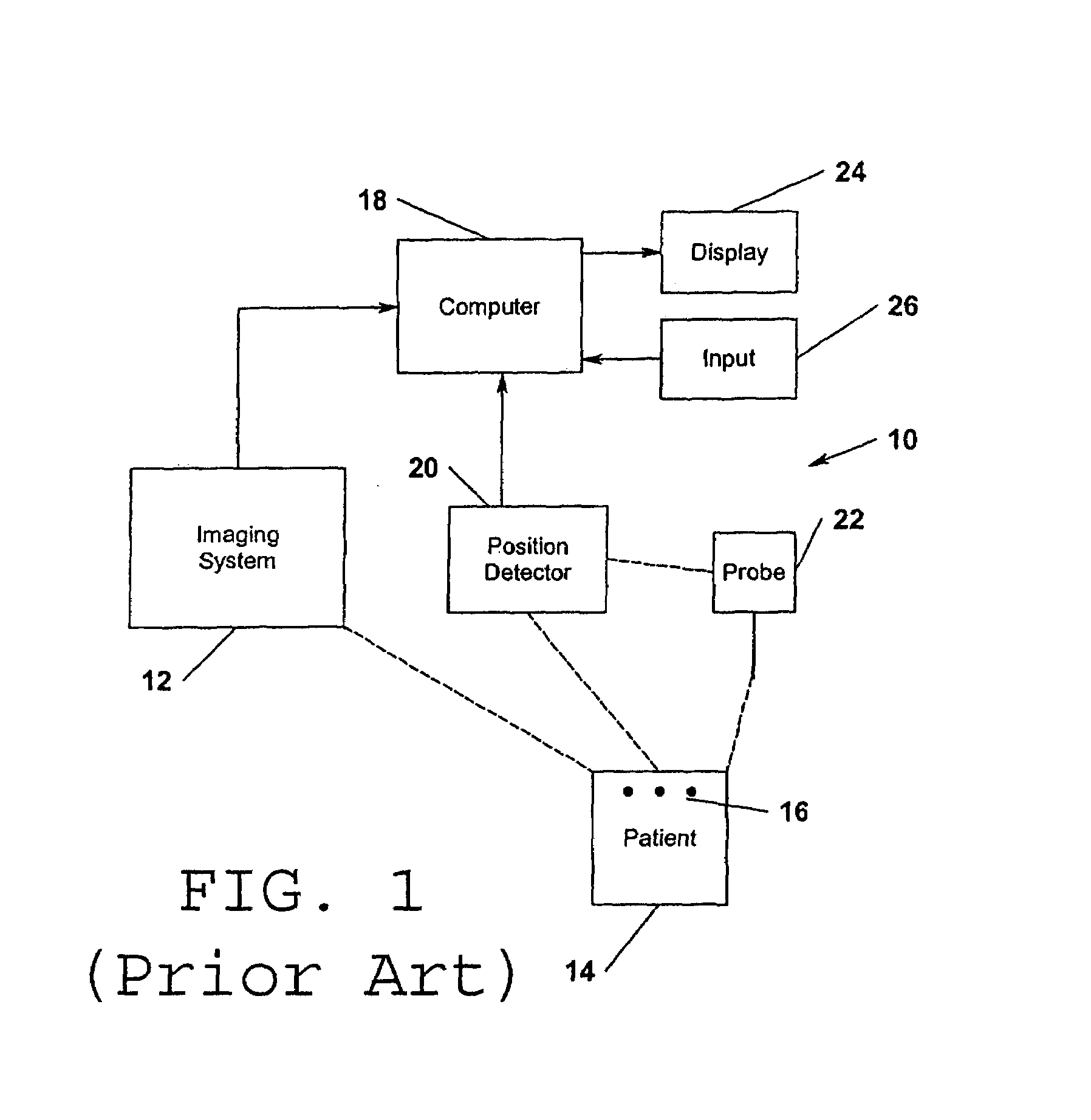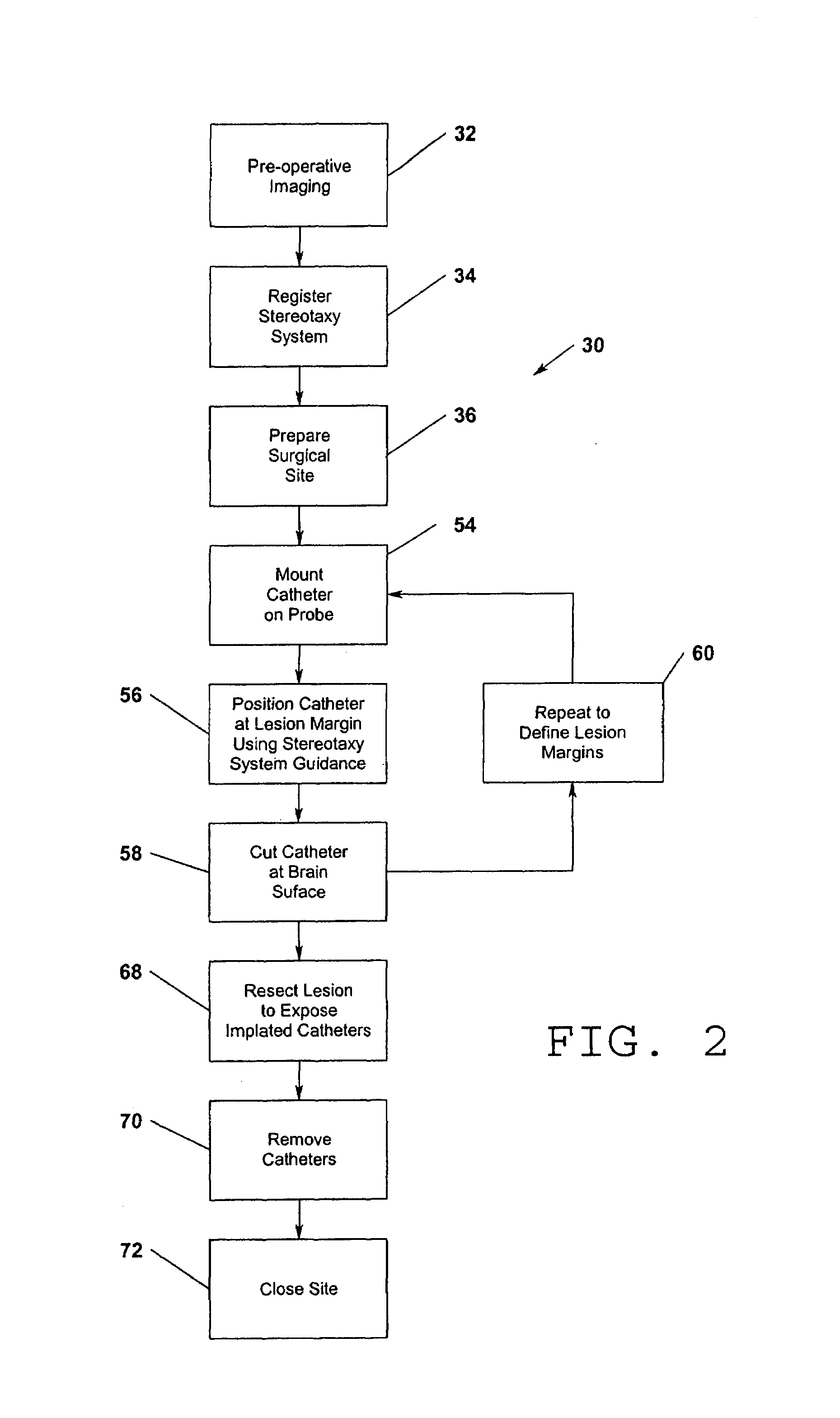Marking catheter for placement using frameless stereotaxy and use thereof
a technology of frameless stereotaxy and positioning catheter, which is applied in the field of surgical devices and appliances, can solve the problems of cumbersome stereotactic frame in general, cumbersome stereotactic frame in particular, and reduce the likelihood of healthy surrounding brain tissue being damaged, and achieve the effect of minimizing the likelihood of damag
- Summary
- Abstract
- Description
- Claims
- Application Information
AI Technical Summary
Benefits of technology
Problems solved by technology
Method used
Image
Examples
Embodiment Construction
[0027]The present invention provides for the improved use of frameless stereotaxy systems to improve surgical results. The present invention will be described in detail herein with reference to use thereof for the accurate and complete resection of brain lesions. In this application, the present invention employs a frameless stereotaxy or neuro-navigation system to define accurately the margins of the lesion to be resected in a manner such that the error typically associated with brain-shift occurring during lesion removal is eliminated without requiring expensive and complicated intra-operative imaging. In this way complete tumor removal can be assured with minimized impact on surrounding normal tissue. It should be understood, however, that the present invention may be applicable to use in other surgical contexts, such as the removal of tumors in all areas of the human and / or animal body and / or other surgical procedures on humans and / or animals.
[0028]The present invention is emplo...
PUM
 Login to View More
Login to View More Abstract
Description
Claims
Application Information
 Login to View More
Login to View More - R&D
- Intellectual Property
- Life Sciences
- Materials
- Tech Scout
- Unparalleled Data Quality
- Higher Quality Content
- 60% Fewer Hallucinations
Browse by: Latest US Patents, China's latest patents, Technical Efficacy Thesaurus, Application Domain, Technology Topic, Popular Technical Reports.
© 2025 PatSnap. All rights reserved.Legal|Privacy policy|Modern Slavery Act Transparency Statement|Sitemap|About US| Contact US: help@patsnap.com



